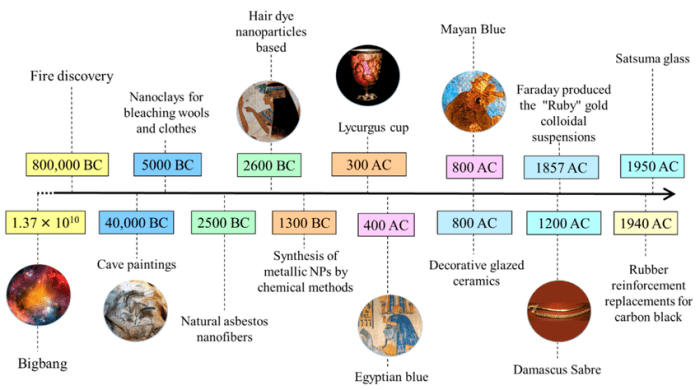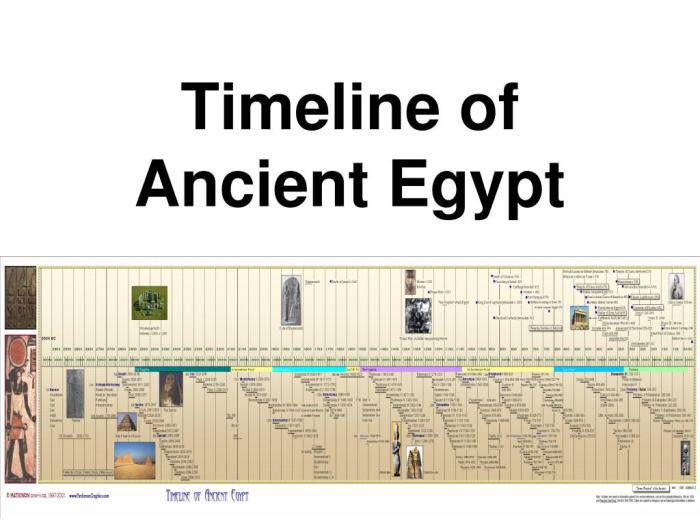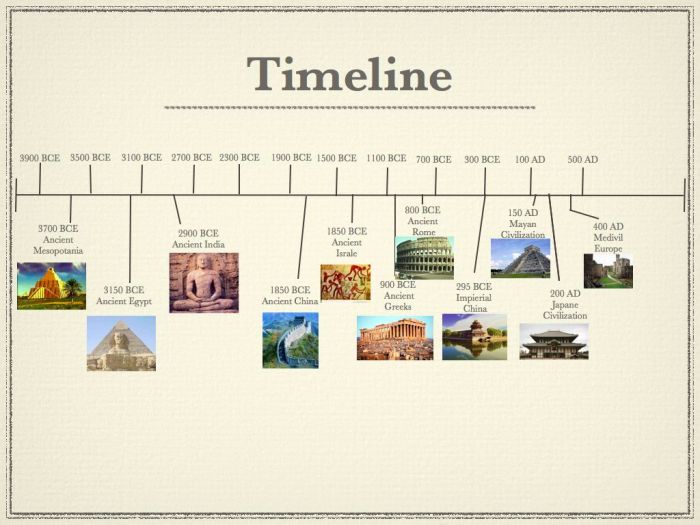Chronological order ancient civilizations timeline printable unveils a captivating narrative that transports readers through the annals of time, showcasing the rise and fall of civilizations that have shaped the course of human history. This comprehensive timeline provides a detailed account of major ancient civilizations, their key events, dates, and significant achievements, offering a comprehensive understanding of the historical context that has shaped our world.
Delving into the depths of ancient civilizations, this timeline unveils the intricate tapestry of human history, highlighting the geographical, climatic, and cultural influences that have played a pivotal role in the development and decline of these societies. By exploring the chronological order of ancient civilizations, we gain invaluable insights into the origins of modern societies and the enduring legacy of the past.
Ancient Civilizations Timeline: Chronological Order Ancient Civilizations Timeline Printable

The ancient world was home to a myriad of civilizations that left an indelible mark on human history. This timeline provides a chronological overview of the major ancient civilizations, highlighting key events, dates, and significant achievements.
Mesopotamia
- c. 3500 BCE: Sumerian civilization emerges in southern Mesopotamia
- c. 2300 BCE: Akkadian Empire established by Sargon of Akkad
- c. 1800 BCE: Babylonian Empire founded by Hammurabi
- c. 1600 BCE: Hittite Empire reaches its height
Egypt, Chronological order ancient civilizations timeline printable
- c. 3100 BCE: Unification of Upper and Lower Egypt under Pharaoh Narmer
- c. 2600 BCE: Construction of the Great Pyramids of Giza
- c. 1500 BCE: New Kingdom period begins, marked by the reign of Thutmose III
- c. 1300 BCE: Reign of Akhenaten and the introduction of monotheism
Indus Valley Civilization
- c. 2600 BCE: Harappan civilization flourishes in the Indus Valley
- c. 2300 BCE: Construction of the cities of Mohenjo-daro and Harappa
- c. 1900 BCE: Indus Valley Civilization declines due to unknown reasons
China
- c. 2000 BCE: Xia dynasty established, marking the beginning of Chinese civilization
- c. 1600 BCE: Shang dynasty replaces the Xia
- c. 1000 BCE: Zhou dynasty begins, lasting over 800 years
- c. 500 BCE: Period of the Warring States, marked by political fragmentation and military conflict
Greece
- c. 2700 BCE: Minoan civilization emerges on the island of Crete
- c. 1400 BCE: Mycenaean civilization flourishes on the Greek mainland
- c. 1200 BCE: Dorian invasion and collapse of Mycenaean civilization
- c. 800 BCE: Greek city-states (poleis) begin to develop
Rome
- c. 753 BCE: Legendary founding of Rome by Romulus and Remus
- c. 509 BCE: Establishment of the Roman Republic
- c. 27 BCE: Octavian becomes Augustus Caesar and establishes the Roman Empire
- c. 476 CE: Fall of the Western Roman Empire
Questions Often Asked
What is the purpose of a chronological order ancient civilizations timeline printable?
A chronological order ancient civilizations timeline printable provides a visual representation of the sequence of events and achievements of major ancient civilizations, offering a comprehensive overview of their historical development.
How can I use a chronological order ancient civilizations timeline printable in the classroom?
In the classroom, a chronological order ancient civilizations timeline printable can be used as a teaching tool to enhance student engagement and understanding of the sequence of events in ancient history. It can also be used as a basis for discussions and activities that explore the connections between different civilizations and the factors that influenced their rise and fall.
What are the benefits of using a chronological order ancient civilizations timeline printable?
Using a chronological order ancient civilizations timeline printable offers several benefits, including providing a clear and concise overview of historical events, enhancing visual comprehension, and facilitating comparisons between different civilizations. It also serves as a valuable resource for students and researchers seeking to understand the broader context of ancient history.


